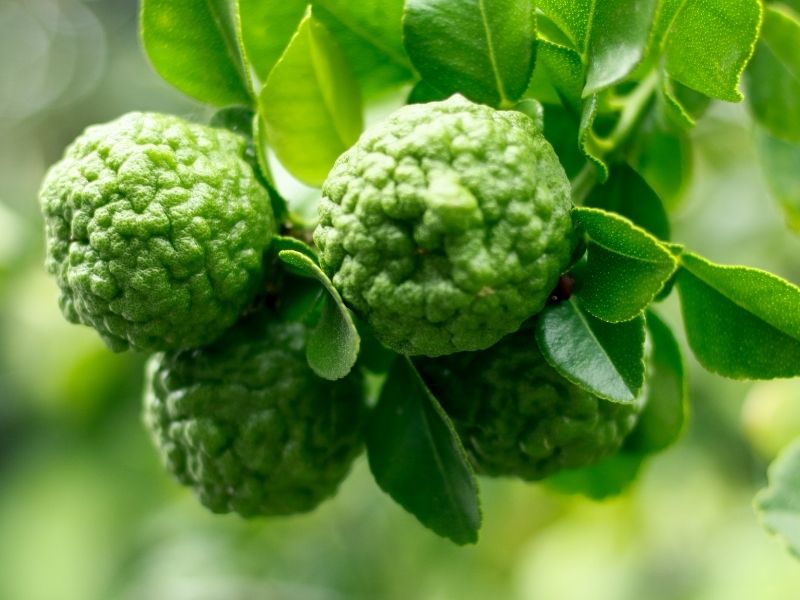The kaffir lime tree is a citrus fruit plant originally from Southeast Asia and China. Though it’s native to tropical climates, many grow successfully outdoors in parts of the US. It can also be grown as a partially indoor plant in areas that experience freezing winters.
The kaffir lime tree gives fragrant and flavorful leaves that are a vital component in Asian cuisine, especially in Thai dishes. Having a kaffir lime tree in your home is convenient because you simply pluck the leaves and use them while cooking.
The fruit is different from regular lime as it has a much thicker and rougher peel. The pulp of the kaffir lime cannot be juiced like regular limes. However, the peel is zesty and many add it to their cooking to add a distinct citrus flavor.
Do you want to grow a kaffir lime tree in your garden or home? Then, continue reading for some useful information on how to care for a kaffir lime tree.
The Essential Steps You Need To Care For A Kaffir Lime Tree

1. Prepare and plant in the right soil mixture.
You may plant the kaffir lime tree in a pot or directly into your garden. However, you must use the soil with good drainage. You can improve the drainage of the soil by adding gypsum, which increases aeration in the soil and helps water to percolate into lower layers of the ground.
If you are planting the kaffir lime tree in a pot, make sure it has enough space for the roots to grow. A diameter of at least two feet is recommended for the plant to get enough room inside the pot.
To help the soil retain moisture, you can place mulch around the plant while taking care to not keep it too close to the base of the plant as that may cause rot.
2. Tropical plants requires lots of sunlight.
Like many other tropical citrus plants, the kaffir lime requires a lot of sunlight. In fact, a minimum of six hours of direct sunlight is essential for the plant. However, it will thrive if it gets even more sunlight. Amazingly, up to twelve hours of sun can help the kaffir lime tree grow better.
If you live in a region where the winter months get very cold, you must protect your kaffir lime plant from the frost. Therefore, you may want to bring it inside during the winter months.
While indoors, you must ensure that the kaffir lime tree still gets enough sunlight. If there is not enough sunlight inside your home, then also add fluorescent lights.
3. Watering routines for your tree.
The kaffir lime tree grows well with a good amount of water since it is native to tropical areas with heavy monsoons. The kaffir lime tree especially needs regular and plentiful watering while it is growing during the warmer months. In fact, you must water it 2 – 3 times per week. To do this, simply fill the pot with water and allow the excess moisture to drain out.
However, the roots of the kaffir lime tree rots easily so you must be cautious not to water the plant in excess. Therefore, before watering the plant, make sure to check if the soil is already wet. The key is to keep the soil moist throughout the growing season without making it too wet.
The kaffir lime tree also likes humidity which might not be a feature of the climate where you live. In that case, provide more moisture to the plant by lightly spraying water on the leaves.
4. Nutrients are necessary for long healthy life.
The kaffir lime tree, like many other citrus plants, needs soil with a lot of nitrogen. You must also add fertilizers to the soil to help the tree thrive. Interestingly, you can provide excellent organic nutrients to the soil by making a mixture of coffee grinds and eggshells.
The coffee provides nitrogen and adds acidity to the soil, which is best for the kaffir lime tree’s growth. The eggshells adds calcium which increases the yield of flowers and fruits in the tree.
You also want to feed your kaffir lime tree additional plant food at least three times per year as follows:
- Help the growth of flowers in the spring season.
- Support the development of fruits in the summer.
- For the plant in general in the fall.
5. Pests can destroy your tree so be aware.
Due to the fragrance of the fruits and the leaves, the kaffir lime tree is vulnerable to pests such as aphids. What’s more, there are three varieties of aphids that affect the kaffir lime tree. Unfortunately, these insects feed on the plant leaves and cause adverse effects that hinder its growth. Of course, after aphids feed on the leaves, they dry up and turn yellow. The aphids can also spread diseases into the plant and leave behind residue that leads to unhealthy mold.
It is inadvisable to use any chemicals as pesticides for the kaffir lime tree as both the fruit and the leaves are edible. Instead, remove the insects either by hand or with high-pressure water. One can also use organic and natural pesticides such as neem, eucalyptus oil or salt spray.
In conclusion.
This is a wonderful plant whose fruits and leaves can be used for a variety of uses. It is also easy to grow and maintain as long as you learn how to care for a kaffir lime tree. If you have questions or suggestions, we love to hear from you in the comments below. Also below are links to more interesting articles about ALL things DESIGN for your home or business.
Images Courtesy of Canva.
Other Posts You Might Enjoy:
9 Water Conservation Garden Design Ideas
Tools That Can Help You Serve Your Customers Better





